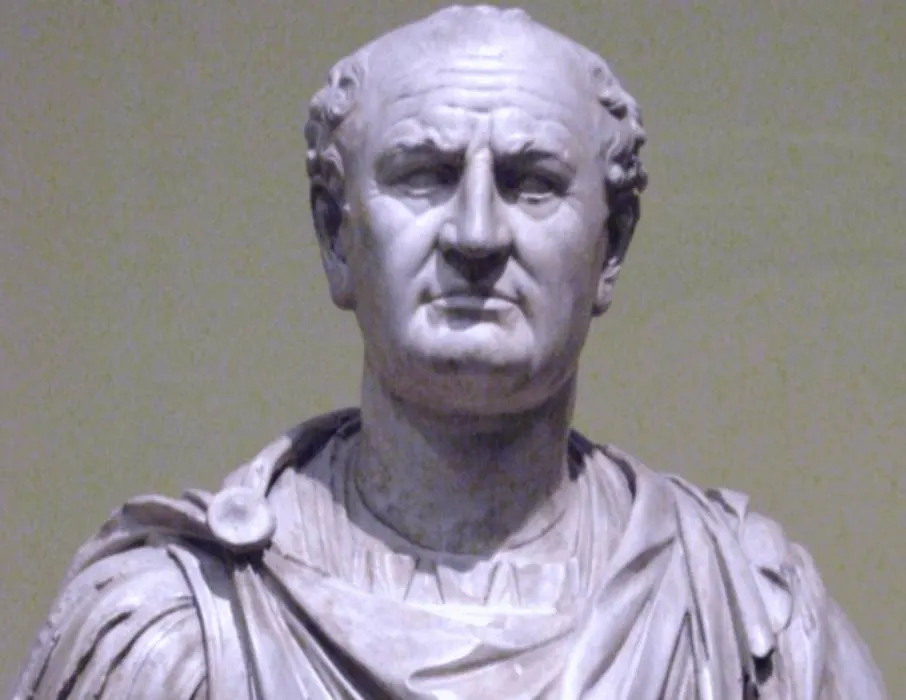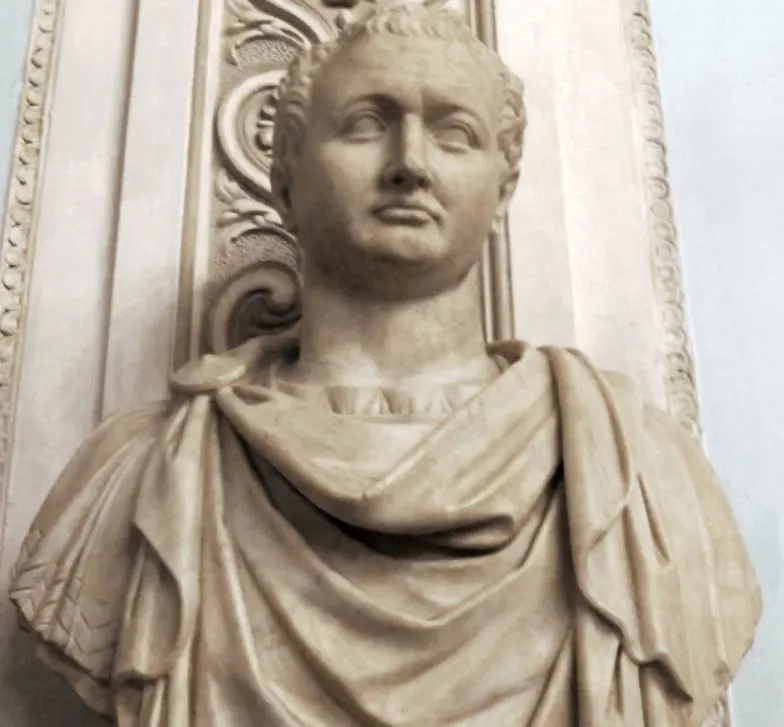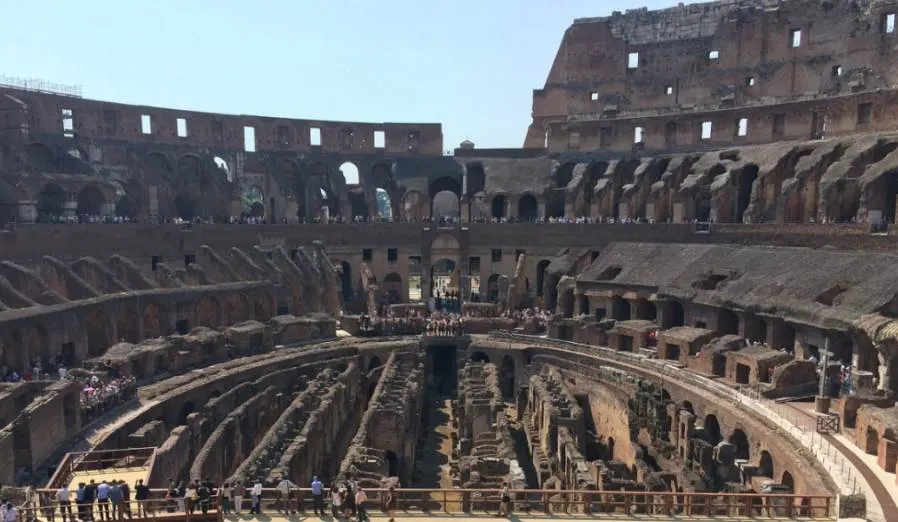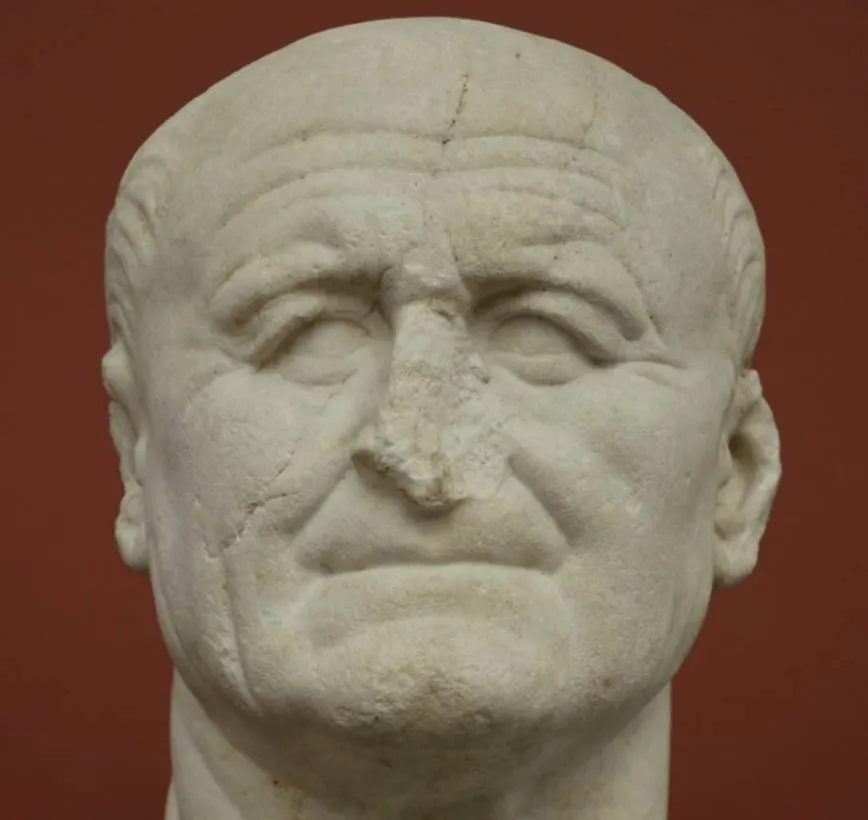This is the Roman Emperor who left a permanent mark on the city by building the most infamous structure in Rome.
In this post, you’ll discover a list of our top 5 facts about Vespasian.
1. Vespasian became the Roman Emperor while abroad
Vespasian, born Titus Flavius Vespasianus (November 17, 9 A.D. – June 24, 79 A.D.), was a great military commander who successfully ended the Great Jewish Revolt. Something he was ordered to do by Nero in the year 66 A.D.
Because of the circumstances back home after the death of the infamous Emperor Nero in 68 A.D., he was appointed as emperor of Rome by the Senate on December 21, 69 A.D.
One of the strangest facts about Vespasian is that he was given this title by the Roman Senate while he was still in Egypt after seizing control of that Roman Province.

2. He founded a dynasty
The Year of the Four Emperors, in which 3 others attempted to seize control but failed miserably, ended in Vespasian leading the country. He had the difficult task of fixing the huge mess that Nero had left behind.
Vespasian was able to do just that, with the help of the treasures brought back from Judaea after the sacking of Jerusalem, and create a dynasty. His sons Titus, who built the Arch of Titus, and Domitian.
One of the most remarkable facts about Vespasian is that he was able to start the “Flavian Dynasty,” which ruled over Rome for 27 years while being from a humble background, as his parents weren’t noble and his father a mere tax collector.

3. He commissioned the construction of the Flavian Amphitheater
It’s arguably one of the most infamous buildings in human history, and Vespasian is the man who commissioned the construction of the Colosseum in Rome.

The “Flavian Amphitheater” as it was known back then was constructed shortly after Vespasian became emperor. The riches brought back home from Jerusalem funded the project, and the slaves captured in Judaea constructed it.
It would eventually become the slaughterhouse for an estimated 500,000 people and over a million wild animals.

4. He believed he was born to rule
One of the most interesting facts about Vespasian is that he actually believed that he was born to rule. A prophecy coming from the east claimed that the future leaders of the world would come from Judaea after the temple of Jerusalem was taken.
The prophecy entailed that the “Messiah” would become the ruler of the “inhabitable earth,” which basically refers to the entire Roman Empire.
Vespasian got so caught up in the prophecy and actually believed it applied to him because he had found several omens and oracles that reinforced his belief.

5. He was considered a master of propaganda
Granted, it wasn’t easy to solve the mess that Nero had left behind and to sustain the civil wars that were still erupting all around the empire in the year 70 A.D.
Since Vespasian didn’t come from a noble family, he still had to gather the necessary support to convince the people of Rome that he was born to rule.
This is probably one of the most important facts about Vespasian, as he brainwashed the people of Rome with propaganda. Coins were marked with military victories, buildings were constructed praising Vespasian and denouncing previous emperors, taxes were revised to benefit the people and fight corruption, and he gave financial rewards to writers who documented that he was the chosen one.
And then, the Colosseum opened…
The sheeple were seduced by endless bloody games, freebies galore in the form of bread and wine, and they remained silent.
So silent, that hardly anything of his rule remains, which simply means that his propaganda campaign was a major success.


Leave a comment
You must be logged in to post a comment.